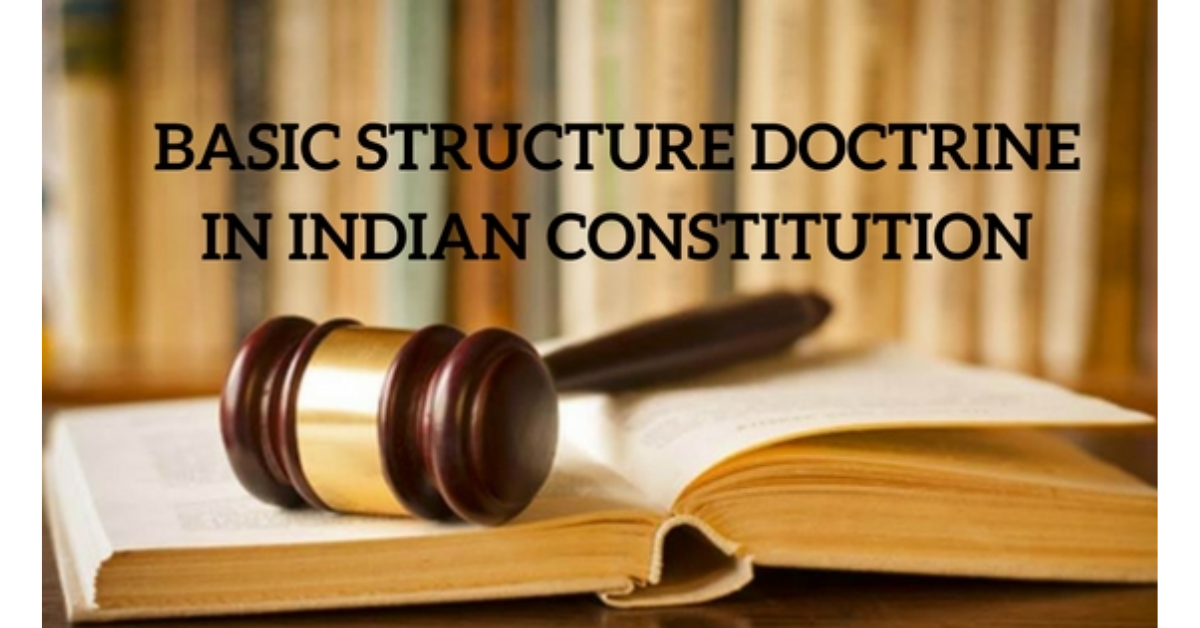The Doctrine of Basic Structure is one of the most significant legal principles in Indian constitutional law. It acts as a safeguard against arbitrary amendments to the Constitution, ensuring that the fundamental principles of democracy, secularism, and rule of law remain intact.
This doctrine was established by the Supreme Court of India to prevent the Parliament from altering the core values of the Constitution. Over the years, it has played a crucial role in preserving the essence of Indian democracy.
In this blog, we will explore:
- What is the Doctrine of Basic Structure?
- Its historical evolution and key Supreme Court judgments
- The impact of this doctrine on Indian democracy
- Current relevance and challenges
1. What is the Doctrine of Basic Structure?
The Doctrine of Basic Structure states that while the Parliament has the power to amend the Constitution under Article 368, it cannot alter or destroy its basic features.
Key Features of the Basic Structure Doctrine:
- Supremacy of the Constitution
- Sovereign, democratic, and secular character of India
- Separation of powers among the legislature, executive, and judiciary
- Judicial review and independence of the judiciary
- Fundamental Rights and Directive Principles of State Policy (DPSP)
- Federalism and unity of India
This doctrine ensures that the core values of the Constitution remain beyond the reach of political influence and temporary majorities in Parliament.
2. Historical Evolution of the Doctrine
The Basic Structure Doctrine was not explicitly mentioned in the Indian Constitution. It evolved through landmark Supreme Court judgments over time.
1. Shankari Prasad Case (1951)
- The Supreme Court ruled that Parliament can amend any part of the Constitution, including Fundamental Rights.
- This view favored absolute parliamentary supremacy.
2. Sajjan Singh Case (1965)
- The Supreme Court upheld the Shankari Prasad ruling, reaffirming that Parliament has unrestricted power to amend the Constitution.
3. Golaknath Case (1967)
- In a historic judgment, the Supreme Court ruled that Parliament cannot amend Fundamental Rights.
- It introduced the idea that Fundamental Rights are sacrosanct and beyond Parliament’s reach.
- This ruling led to tensions between the judiciary and Parliament.
4. Kesavananda Bharati Case (1973) – Birth of the Basic Structure Doctrine
- The turning point in Indian constitutional law.
- The Supreme Court ruled that Parliament can amend the Constitution but cannot alter its “basic structure.”
- This judgment introduced judicial review as a safeguard against constitutional amendments that could destroy democracy.
5. Indira Gandhi v. Raj Narain (1975) – Strengthening the Doctrine
- The Supreme Court struck down the 39th Constitutional Amendment, which attempted to place election disputes of the Prime Minister beyond judicial review.
- It upheld democracy and free elections as part of the basic structure.
6. Minerva Mills Case (1980) – Balancing Fundamental Rights and DPSPs
- The Supreme Court ruled that Parliament cannot destroy the harmony between Fundamental Rights and Directive Principles of State Policy (DPSP).
- This further reinforced judicial supremacy in protecting the basic structure.
3. Significance of the Basic Structure Doctrine
The Basic Structure Doctrine has played a critical role in:
1. Preventing Abuse of Power
- Ensures that no political party can amend the Constitution arbitrarily.
- Protects democratic principles from majoritarianism and authoritarianism.
2. Protecting Fundamental Rights
- Parliament cannot take away Fundamental Rights such as the Right to Equality (Article 14) and Right to Life (Article 21).
- Guarantees that citizens always have legal remedies against injustice.
3. Ensuring Judicial Independence
- Prevents the executive and legislature from interfering with the judiciary.
- Strengthens judicial review to check unconstitutional amendments.
4. Maintaining Federalism
- Prevents excessive centralization of power by protecting the federal structure.
- States retain their autonomy within the constitutional framework.
5. Safeguarding Secularism
- Ensures that secularism remains a fundamental principle of governance.
- Prevents any government from altering India’s secular character.
4. Challenges and Criticism of the Doctrine
While the Basic Structure Doctrine is essential for protecting democracy, it has also faced criticism.
1. No Clear Definition of “Basic Structure”
- The Supreme Court has not provided a fixed definition of what constitutes the basic structure.
- This makes it open to judicial interpretation, leading to inconsistent rulings.
2. Judicial Overreach
- Some critics argue that the judiciary oversteps its role by striking down amendments passed by elected representatives.
- It raises concerns about the balance of power between the judiciary and legislature.
3. Conflict Between Fundamental Rights and DPSPs
- The Minerva Mills case ruled that Parliament cannot amend the Constitution in a way that weakens Fundamental Rights.
- However, some argue that this makes it harder for the government to implement progressive policies like land reforms.
4. Limited Amendment Powers for Parliament
- Some believe that the Basic Structure Doctrine restricts Parliament’s ability to adapt the Constitution to changing times.
- In contrast, countries like the UK and USA allow flexible constitutional amendments.
5. Relevance of the Doctrine in Contemporary India
The Basic Structure Doctrine remains highly relevant in modern India.
1. Protection Against Constitutional Misuse
- In recent years, concerns about majoritarianism and constitutional amendments for political gain have emerged.
- The Basic Structure Doctrine prevents any ruling government from undermining democracy.
2. Judicial Review of Amendments
- Recent Supreme Court rulings have reinforced the doctrine by striking down laws that:
- Undermine judicial independence.
- Weaken Fundamental Rights.
- Interfere with federalism and secularism.
3. Strengthening Democratic Institutions
- The doctrine ensures that elections, free speech, and fundamental freedoms remain protected.
- Any attempt to weaken democratic institutions can be challenged in court.
Conclusion
The Doctrine of Basic Structure is a cornerstone of Indian democracy, ensuring that the core values of the Constitution remain unchanged. It has protected India from authoritarian amendments and upheld democracy, secularism, and fundamental rights.
While it has faced criticism, the doctrine remains essential to maintaining the rule of law and constitutional supremacy. As India evolves, it will continue to play a crucial role in preserving the democratic framework.
Would you like any modifications or additional details? 😊

